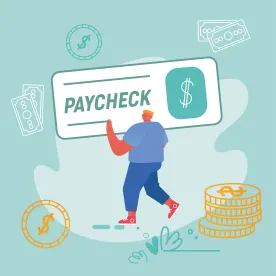PPP Loan Applications Due by June 30, 2020
As discussed in our June 4, 2020, Client Alert on the Paycheck Protection Program Flexibility Act of 2020 (PPPFA), the PPPFA amended several key provisions of the Paycheck Protection Program (PPP), but one item that did not change is the application deadline. This means all PPP applications are due by June 30, 2020. Applications must receive a Small Business Administration (SBA) loan number by June 30, 2020, and any interested applicants should work with their lender prior to this date to ensure submission of the application.
New Forgiveness Applications
On June 16, 2020, the SBA released revised forms of the loan forgiveness application and corresponding instructions to reflect the PPPFA amendments. The updated documents include a revised standard forgiveness application (Form 3508), as well as corresponding instructions, and a new short form “EZ” forgiveness application (Form 3508EZ), as well as corresponding instructions, which can only be used if certain conditions are satisfied.
The revised standard forgiveness application includes calculations related to reductions of salary or full-time employees by borrowers and the revised application instructions provide details about these calculations. As expected, the key updates revolve around the calculation of the covered periods, the full time equivalent and salary/wage reduction measurement periods, and the 60/40 thresholds for payroll and non-payroll expenses. A detailed breakdown of the changes can be found in our revised FAQs (see below).
The EZ version of the forgiveness application, which is only three pages, may only be used by borrowers (1) who do not have employees; (2) who did not reduce salaries or hourly wages by more than 25% during the covered period and did not reduce employees between January 1, 2020 and the end of the covered period; or (3) who did not reduce salaries or hourly wages by more than 25% during the covered period and who were unable to operate during the covered period at the same level of business activity as before February 15, 2020, due to compliance with requirements established or guidance issued between March 1, 2020 and December 31, 2020 by the Secretary of Health and Human Services, the Director of the Centers for Disease Control and Prevention, or the Occupational Safety and Health Administration, related to the maintenance of standards of sanitation, social distancing, or any other work or customer safety requirement related to COVID-19. Each of these conditions are explained further in the instructions for the EZ form. The EZ forgiveness application is intended to simplify the forgiveness process for borrowers who have maintained their employees and salaries/wages during 2020.
Based on the revised applications and instructions, borrowers may apply for loan forgiveness as soon as the covered period expires (whether the borrower uses the 24-week covered period or elects to use an eight-week covered period) and their lender is able to accept forgiveness applications. Borrowers may not apply before the end of the applicable covered period.
Borrowers using either forgiveness application form will be required to disclose the number of employees at the time of the forgiveness application. Further, borrowers will be required to measure the full time equivalent safe harbor as of the earlier of the date the forgiveness application is submitted or December 31, 2020. Meaning that to be eligible for this safe harbor, borrowers may need to keep all full time equivalent employees employed even after the covered period ends. We note further, that this safe harbor may be irrelevant if the average full time equivalent employees during the covered period is equal to or greater than the average full time equivalent employees during the borrower’s chosen reference period (either February 15 – June 30, 2019 or January 1 – February 29, 2020, unless the borrower is a seasonal employer, in which case it can choose either of those periods or any consecutive 12-week period between May 1 – September 15, 2019).
Forgiveness FAQs
We have also updated our previous FAQs on PPP Loan Forgiveness to reflect these changes. You can find the new FAQs here and a redline against the prior version here.
Other Updates
The SBA has released a number of Interim Final Rules since the enactment of the PPPFA and, while most of contents of these rules are to update changes resulting from the PPPFA, there are two material revisions to keep in mind.
The first is the SBA confirmed it is extending the maturity date for the portion of any PPP loans that are not forgiven to five years for all loans made on or after June 5, 2020, which is consistent with the maturity date extension under the PPPFA. However, the maturity date for all PPP loans made before June 5, 2020, shall remain two years, “unless the borrower and lender mutually agree to extend the maturity of such loans to five years . . ..” Meaning, borrowers who do not have all of their loan forgiven (or do not expect to have it all forgiven at the time of applying), should ask their lender for an extension of the maturity date to up to five years if they would like to take advantage of the new legislation.
The second is the maximum any “owner-employee” can have forgiven is either (i) eight weeks’ worth (8/52) of 2019 net profit (capped at $15,385) if the borrower elects to apply the eight-week covered period or (ii) 2.5 months’ worth (2.5/12) of 2019 net profit (capped at $20,833) if the borrower elects to apply the 24-week covered period. The definition of “owner-employee” includes any self-employed person, a general partner, owner-employee of an S-corporation, and, presumably, an owner-employee of a C-corporation.




 />i
/>i

